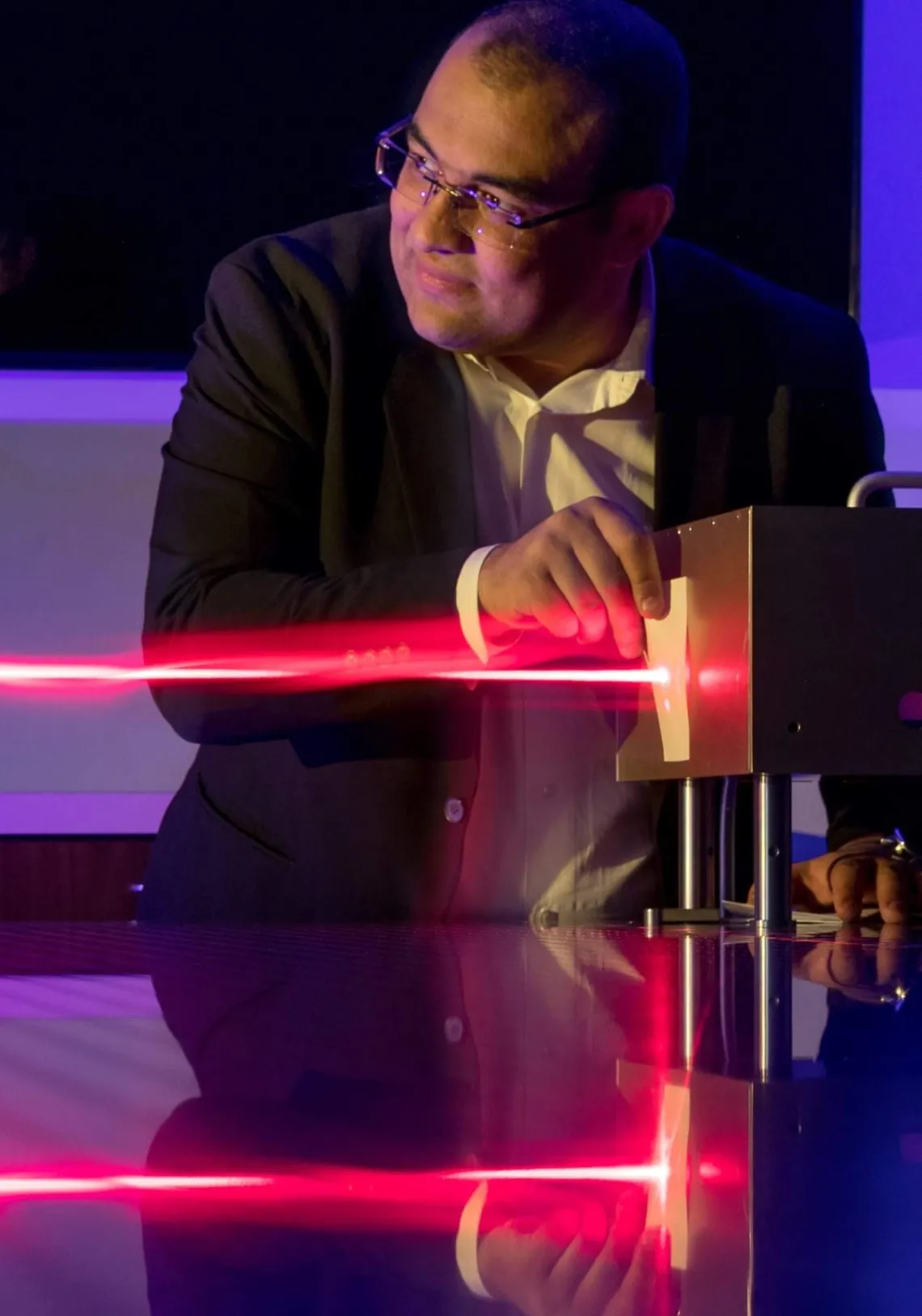Assistant Professor Mohammed Hassan Wins $1.1 Million Keck Award for Effort to Achieve a Scientific First—Photographing Electrons in Motion

Nobody has ever photographed an electron in motion. Professor Mohammed Hassan wants to be the first. With a new $1.1 million vote of confidence from the W.M. Keck Foundation, he’s making strides.
“The idea of seeing something humans have never seen before drives me,” said Hassan. “Electron motion is in every aspect of life. Even our eyes see because electron motion generates light, transmits information, and forms a picture in the brain. By imaging electron motion, we would open a new window into life itself.”
Yet even the most expensive, sophisticated commercially available electron microscopes don’t come close to being able to photograph something that small, moving that fast.
“I am always curious about the electronic motion and its dynamics. The electron microscopy is a powerful tool which could give me a direct access to image the electron motion, however, this requires a temporal resolution in the order of a few femtoseconds to hundreds attosecond time scale. The temporal resolution in electron microscopy depends on the pulse duration of the electron pulse which probes and images the system dynamics. The generation of short electron pulses is very challenging due to the space charge effect. The idea of controlling the temporal profile of the electron pulse was always fascinating me. I will use the laser pulse to obtain the extreme speed in electron microscopy to capture the electron in action. I am thankful to the W.M. Keck Foundation for their support in funding this high-risk, high-reward project, and I’m hopeful it will help realize my dream,” said Hassan.
The camera Hassan and his group are developing will use a shutter that opens and closes in a single attosecond. Anything slower will make an electron appear exactly as we imagine it: a whirring blur. Hassan has bought a million-dollar commercial transmission electron microscope and is now in the process of modifying it to capture images in attoseconds. He calls the technology “Attomicroscopy,” and has a patented the intellectual property through UArizona’s Tech Launch Arizona.
In 2013, Hassan was a postdoctoral scholar at the Max-Planck Institute of Quantum Optics in Munich, Germany, where he developed a device to compress laser pulses, making him a Guinness World Record holder for the fastest pulse of visible light. As he builds the world’s first microscope fast enough to image an electron, his six-year-old achievement in laser pulse technology will play an essential role in his one-of-a-kind Attomicroscopy.
“This project is full of technical challenges. If it weren’t, anybody could do it,” said Hassan. “But I believe we have the expertise to address them one by one until we reach our goal.
The ability to see electrons in motion would have real impacts. “You can control only what you can see,” Hassan explained.
Using laser pulses, for example, scientists may be able to control electron motion and spur a technological revolution, with electronics (like smartphones and computers) that could transfer data a million times faster than current speeds. Likewise, by controlling electron motion in chemical compounds, physicians may be able to provide personalized medication for patients based on the structure of their DNA.
“These are just two examples, but the possibilities are endless,” said Hassan.
By Emily Litvack
Edited by Karina Valdez
Research, Innovation & Impact



